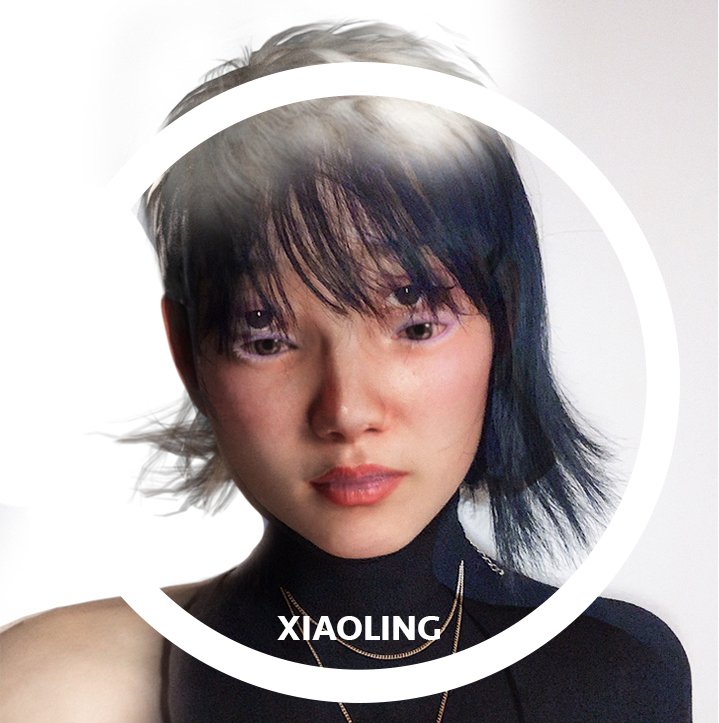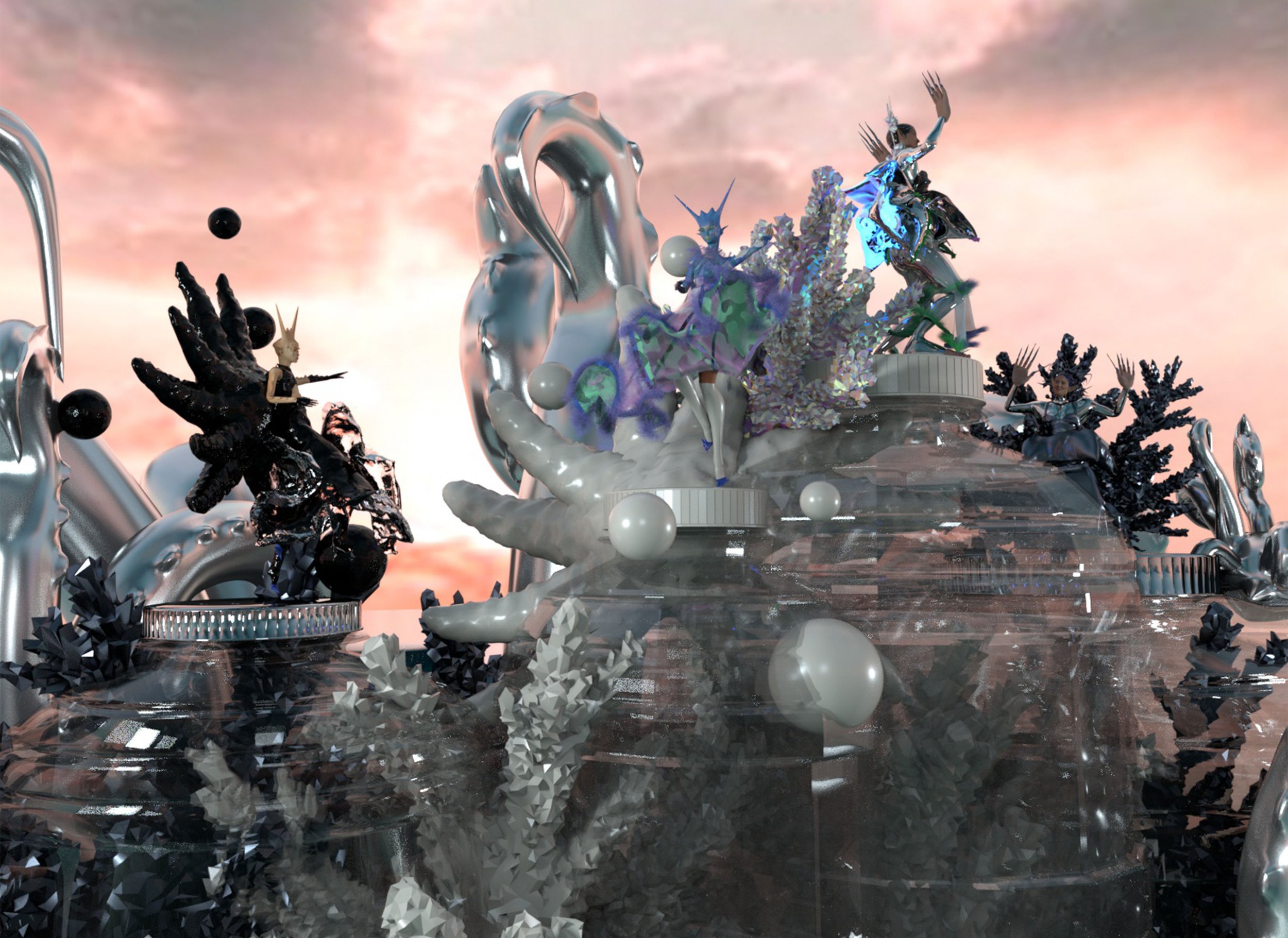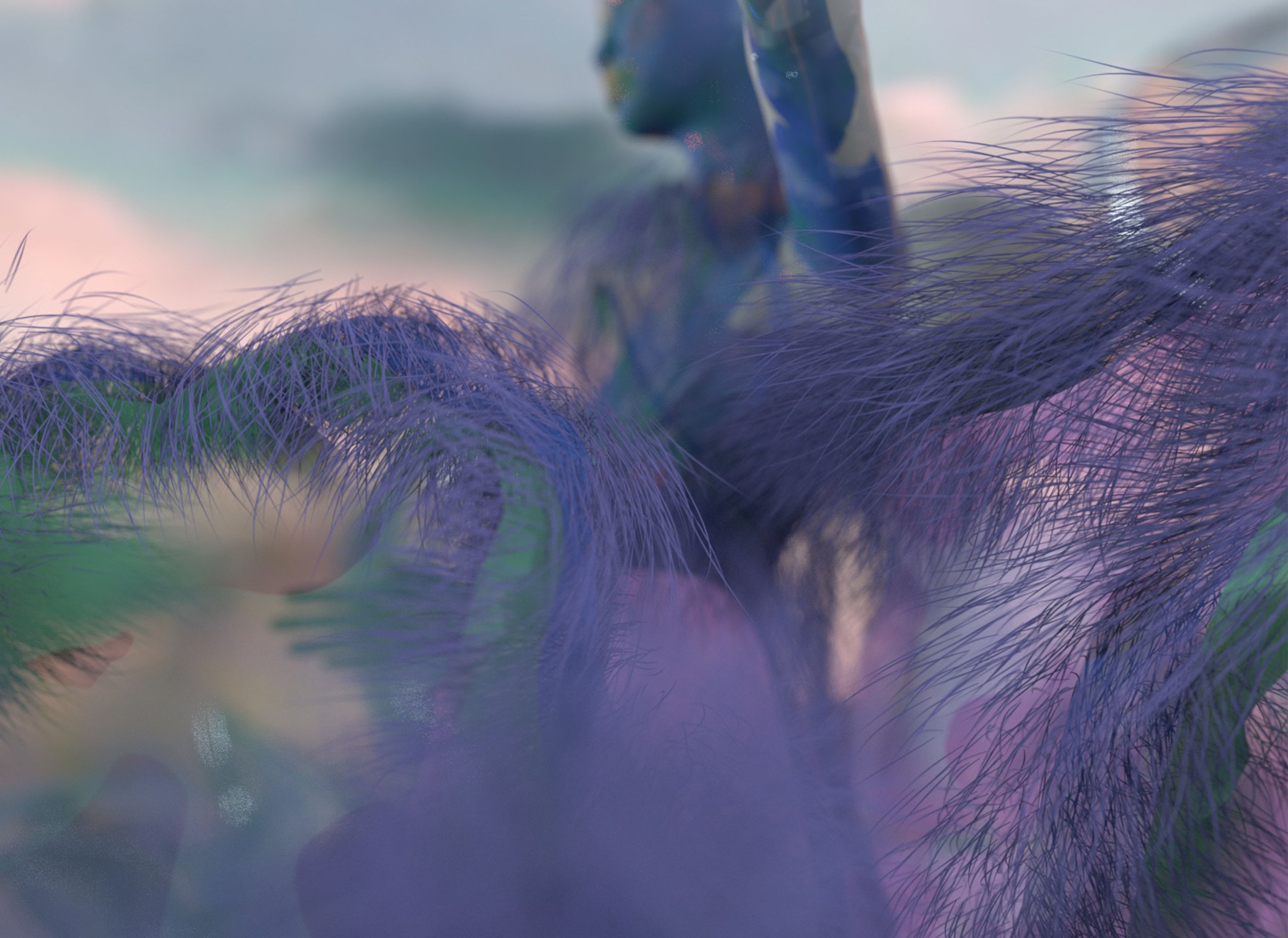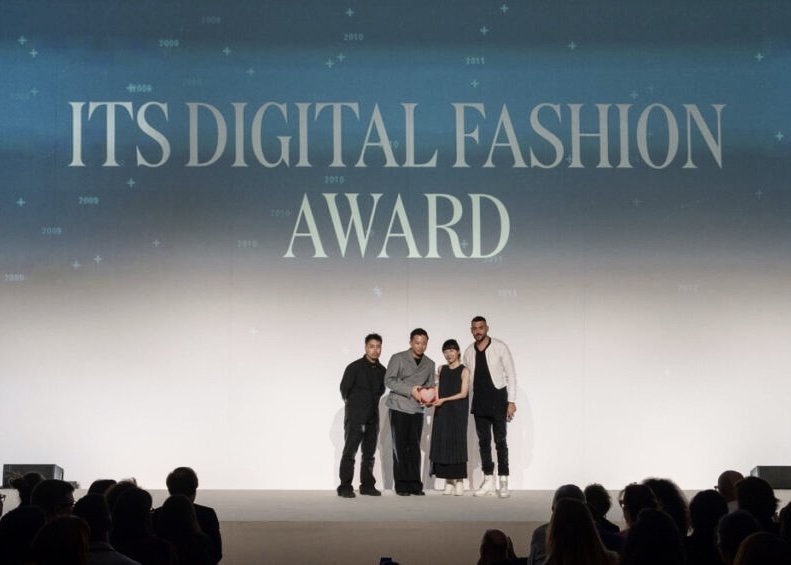Sally He in Conversation with Interdisciplinary Creative Xiaoling Jin
Xiaoling Jin is an award-winning interdisciplinary creative whose practice focuses on the intersection of fashion, design & technology. Her practice focuses on bespoke fashion, fashion in the metaverse, the future of garment technology, and building a bridge between the digital and physical worlds.
Utilising her expertise in draping, pattern cutting, 3D modelling, and AR within her practice, her work explores many facets, which include: self-expression, emotional landscapes, sustainability in the physical world, and the metaverse.
Xiaoling Jin.
Sally He: Tell me more about your journey as a designer. When did you start to get interested in fashion?
Xiaoling Jin: My fashion journey began when I was still at school. I was intrigued by the styling and idea of mixing and matching clothing with my wardrobe. I was particularly intrigued by the variety in the structural form of fabrics and how it performs and articulate on my body. Also, styling my outfits is a form of self-expression. Therefore, I perpetuated my interest in fashion in my education and career.
SH: When did you first hear about NFT and the metaverse?
XJ: It was around 2017 that I first encountered Crypto Kitties, a blockchain game developed by Canadian studio Dapper Labs. The game allows players to buy, sell, and create NFTs using Ethereum. This was the first time I noticed the innovation of technology in making art, and since then, I have constantly been looking at the trend and news around NFTs and metaverse.
In 2020, I started to incorporate NFTs into my artistic practice. While doing my Master's at the Royal College of Art, I had the opportunity to explore digital art and fashion. Since then, I have been hugely inspired by the vast opportunities and possibilities digital art can bring to fashion design. It broadens our perspectives and breaks the boundaries of traditional fashion design and garment cutting. This is because digital fashion allows the designer and the model to express concepts through multiple layers of digital filtering simultaneously across multiple platforms.
Under the Shell, Xiaoling Jin.
SH: How did institutional practice influence your professional artistic practice after graduating from the Royal College of Art (RCA)?
XJ: Before my journey with RCA, I predominantly focused on my professionalism in highly technical product design and pattern cutting. The difference in the education system RCA forced me to explore my design philosophy and to build my fashion ethos and philosophy. This opportunity allowed me to look into bespoke and personalised fashion design. More specifically, I used this when designing things to blur gender boundaries through the power of filtering and AR technology.
Under the Shell, Xiaoling Jin.
SH: When did the idea of your co-founding brand Eternity come along, and how did you make your vision come true with your partner?
XJ: The pandemic allowed me to learn and explore metaverse and NFTs. At the time, it was challenging to present my creative ideas because of the lockdown and the university's closure, which resulted in a more laborious and expensive physical and creative process. Therefore, it gave me a reason to research NFTs and metaverse extensively. Throughout this research, I realised that the metaverse and NFTs had become an emotional bridge between the creator and users.
Regardless of this universal situation of the pandemic, our generation of youth and adults rely heavily on technology and social media. We care about our social presence to an extreme extent. This standard of an impressive social media presence was exacerbated as a result of the world’s growing reliance on the internet. Therefore, digital fashion and NFTs provide an alternative platform to millennials and Gen Z.
This opportunity gave me and my friends a start-up idea. We all have similar visions and perspectives and want to bring something new to the fashion industry. Official E-ternity exchanges artists' and designers' virtual clothes and NFTs. Customers and brands get strategy, 3D, AR, NFT assets, and immersive experiences. We link digital artists and companies to create a new digital fashion community where users can swap virtual ensembles, exhibit, and communicate.
SH: How do 3D modelling and AR creation help to convey your idea on bespoke fashion?
XJ: 3D modelling allows me to visualise my sketches and designs quickly and accurately when altering sizes and styles. AR technology is efficient - it connects with my fashion philosophy and provides more freedom for the design and model to express themselves. Ultimately, the AR fashion filter extends the connection between the garment and the wearer.
ITS Digital Fashion Award.
SH: Congratulations on your recent ITS Digital Fashion Award. How did the idea come along, and do you think NFT and metaverse are sustainable ways to express one’s artistic pursuits?
XJ: ITS Digital Fashion Award is a global fashion competition. Initially, it was a traditional fashion competition that only incorporated traditional design criteria. This was the first year that the panel introduced the digital fashion section, and for that occasion, my team and I decided to create the project Symbiosis.
The fashion industry has constantly been criticised for its excessive garment waste and pollution towards the environment. Symbiosis aims to raise awareness about the environment, specifically marine pollution. The contrast of metal and plastic on the creature aims to depict animals. Furthermore, the colour and motion of the design illustrate the beauty and natural qualities of the ocean and its unique beauty.
Symbiosis, E-ternity.
SH: What is your future vision with your projects and eternity in the digital art community and beyond?
XJ: Our team is building a community platform for a digital designer to trade, share and collaborate. The focus of each stage of company development is very different. For now, we are focusing on constructing our platforms. In the future, the team and I can create meaningful projects, meaning that we not only create commercial projects but also conceptualise and map out our interests and project.
SH: NFT and Fashion have become booming trends. The first luxury brand entrant, Gucci’s Aria film, was auctioned for $25,000 at Christie’s in May 2021 during the PROOF OF SOVEREIGNTY: A Curated NFT Sale by Lady Pheonix Sale. What is your take on this collaboration?
XJ: The collaboration between the luxury brand and NFTs will be a continuous and good development for the fashion industry. This is because the fashion industry is always seen as a slow-growing area. This is an opportunity for luxury brands to expand their market audience, specifically high net-worth collectors. Those collectors might not be interested in luxury fashion, but they will be interested in collecting NFTs., As a consequence, many fashion brands are now promoting and executing NFTs. It is amazing that fashion NFTs can provide a commercial platform for artists and designers to grow and innovate together.
Eternity of Wildlife - Panda, E-ternity.
SH: Sustainability is a constant debate in the fashion industry. Does NFT help designers to achieve their potential vision sustainably?
XJ: I am interested in physical fashion, pattern cutting, and researching new technology within AR and digital sectors. Digital fashion allows the design process to be more opaque and creative as it breaks down the material and structure on the computer, which completely subverts fashion’s previous physical limitations. Additionally, it minimises waste with traditional fashion productions - it is key to preserving and promoting sustainability in fashion.
However, blockchain and NFTs will need machines to process, which requires a lot of energy. If this community continues to grow, the technology cannot support sustainable development and will eventually be a part of the pollution. Additionally, digital waste is an enormous part of pollution digitally. Even though digital fashion aims to reduce physical waste, as the community of metaverse and digital fashion grows and brands join the industry, more waste and money will be produced and required to maintain the virtual environment.
SH: Does the metaverse expand the vision of the future of fashion? What are the things you are most looking forward to in the future?
XJ: The metaverse has reduced limitations on creativity and brought freedom to artists, allowing artists to achieve a more creative vision. Additionally, it can reduce pollution and waste in the physical fashion industry. I look forward to seeing how digital fashion and NFTs will develop in the fashion industry.
SH: As a Chinese designer, what is your opinion on the NFT Market in China?
XJ: The NFTs and metaverse market are growing very fast in China. Some of the biggest commercial platforms are encouraging young designers to participate in promoting their work. The biggest factor behind such success is our generation; the power of consumerism behind the millennials and Gen Z are influential in investing in digital art.
Thanks to Xiaoling Jin on behalf of MADE IN BED.
To learn more about Xiaoling Jin, follow her and her company on:
Instagram: @xiaolingjinofficial , @e.ternityofficial
Twitter: @info_e_ternity
Website: xiaolingjin.com , e-ternity.uk
Sally He
Interviews Co-Editor, MADE IN BED







